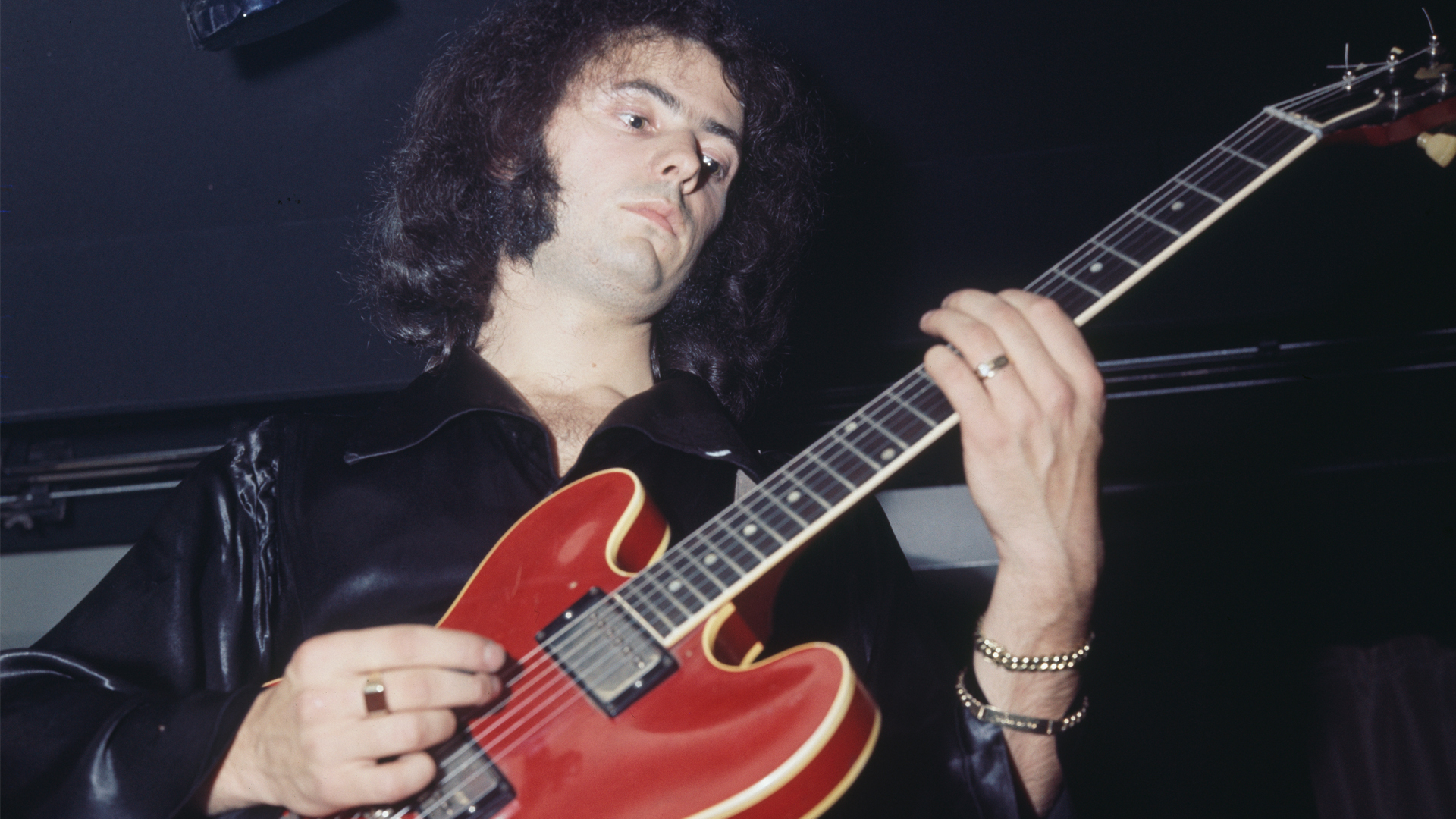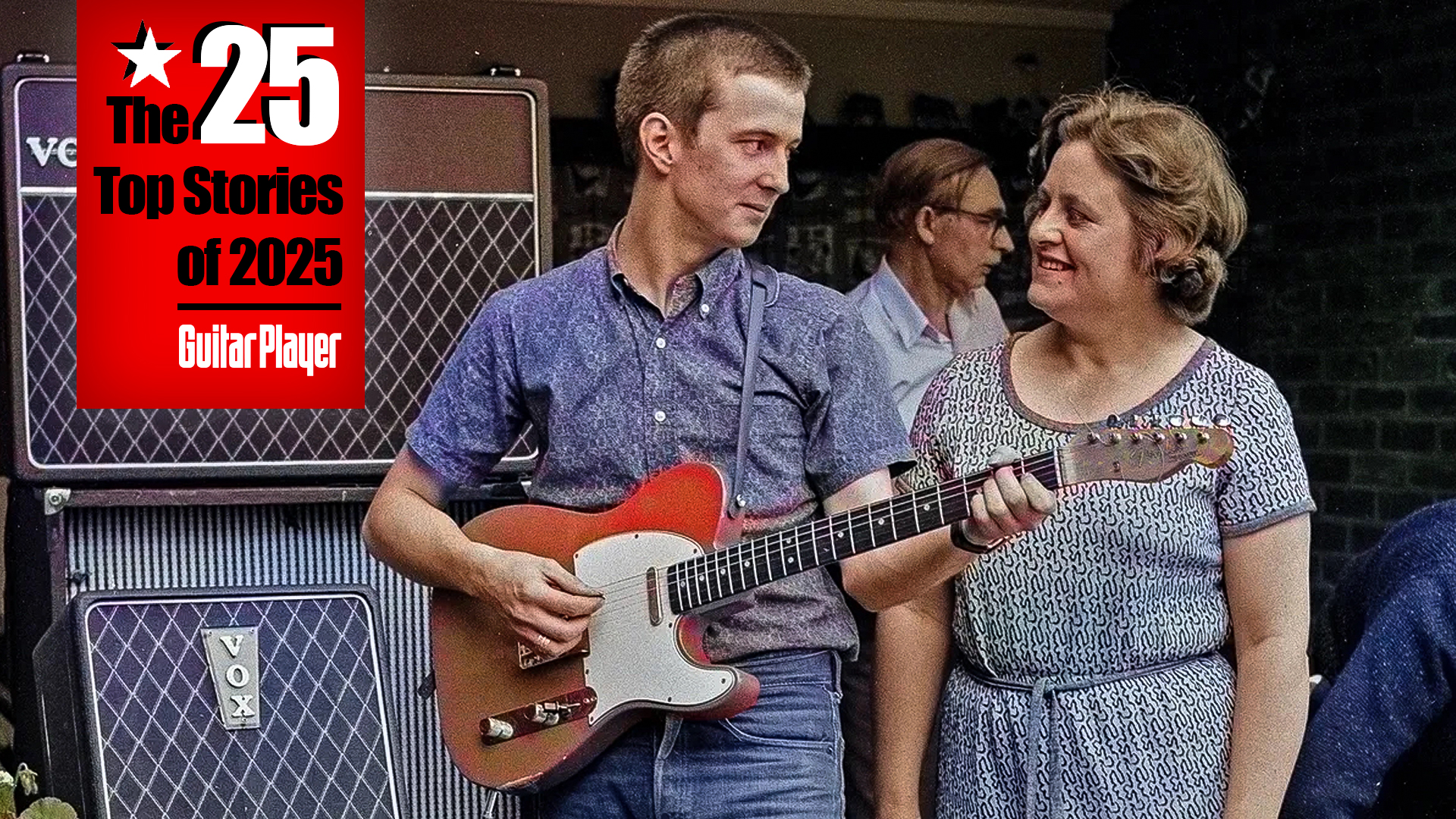“After a half hour sales pitch, he said, 'Forget the Gretsch! That's a toy. You'll appreciate the Gibson 335 much more later in life.' ” Ritchie Blackmore tells how amp-maker Jim Marshall sold him the guitar he used to launch Deep Purple
Blackmore also shares tales of buying Eric Clapton's Stratocaster and waking him up by blasting it at 3 in the morning

Ritchie Blackmore may be considered one of the definitive rock and roll Stratocaster players, but it wasn’t until 1970’s earth-rattling masterpiece In Rock that the Fender model found its way onto Deep Purple records.
Before then, Blackmore’s weapon of choice — from his pre-Purple instrumental group, the Outlaws, through to the band’s early shows and recordings — was a 1961 Gibson ES-335.
But it appears the choice wasn’t entirely his own.
As Blackmore explains in the latest episode of his Tales from the Tavern YouTube series, he was interested in buying a Gretsch Jet Firebird when a very persuasive salesman disabused him of that idea.
That man was none other than famed amp maker Jim Marshall, who at the time ran a music store in London's Hanwell borough.
“I went there with the intention of buying a Gretsch Jet Firebird,” Blackmore reminisces. “After half an hour of a sales pitch, he said, 'Forget the Gretsch. That's a toy compared to the 335.' I went, 'But I want the Gretsch. I love the Jet Firebird.' He said, 'You'll appreciate the 335 Gibson much more later in life.' So I walked out with a Gibson!”
Marshall's powers of persuasion went beyond his electric guitar pitch. He also convinced Blackmore to buy an amp. As a result, the guitarist says, “I was left with next to nothing to live on for the week!”
All the latest guitar news, interviews, lessons, reviews, deals and more, direct to your inbox!
Marshall’s store was situated near the infamous Ealing Club where Mick Jagger, Keith Richards and Brian Jones met, leading to the formation of the Rolling Stones. It would be a little while longer before Marshall redefined the amplifier world with his namesake brand.
“Jim was a very affable kind of guy,” Blackmore says. “He knew nothing about amplifiers, yet it's funny to see today, every band has got a Marshall amplifier, and that was built in the beginning by someone who knew nothing about amplifiers.

“He was a drum teacher,” the guitarist continues. “I always find that slightly amusing!”
The ES-335 would go on to feature in the video for Deep Purple's "Child In Time."
It wouldn't be the last time someone influenced Blackmore's guitar-buying habits. By the late 1960s, the ES-335's neck was becoming bowed and he began looking for a replacement. He found what he wanted in 1969 when one of Eric Clapton's roadies, with a black Strat in hand, stopped by the house Blackmore shared with the rest of Deep Purple. He bought the Strat, which had belonged to Clapton, and went on to own many more (and even obliterate a fair few).

Blackmore wouldn't meet Slowhand for another four years when, in 1973, he accidentally gave his fellow Strat-lover a rude awakening at 3 a.m. The guitarist had cranked a Marshall stack (Jim Marshall strikes again!) to protest construction work that had been going on in the hotel. He had no idea Clapton was fast asleep in the room next door.
Another episode of Tales From the Tavern saw Blackmore remembering the time George Harrison sheepishly asked if he could join Deep Purple on stage, and play one of Blackmore's Strats in the process. Even though Blackmore butchered the Little Richard cover they played, he says the Beatle was having so much fun, he didn't notice.
A freelance writer with a penchant for music that gets weird, Phil is a regular contributor to Prog, Guitar World, and Total Guitar magazines and is especially keen on shining a light on unknown artists. Outside of the journalism realm, you can find him writing angular riffs in progressive metal band, Prognosis, in which he slings an 8-string Strandberg Boden Original, churning that low string through a variety of tunings. He's also a published author and is currently penning his debut novel which chucks fantasy, mythology and humanity into a great big melting pot.

